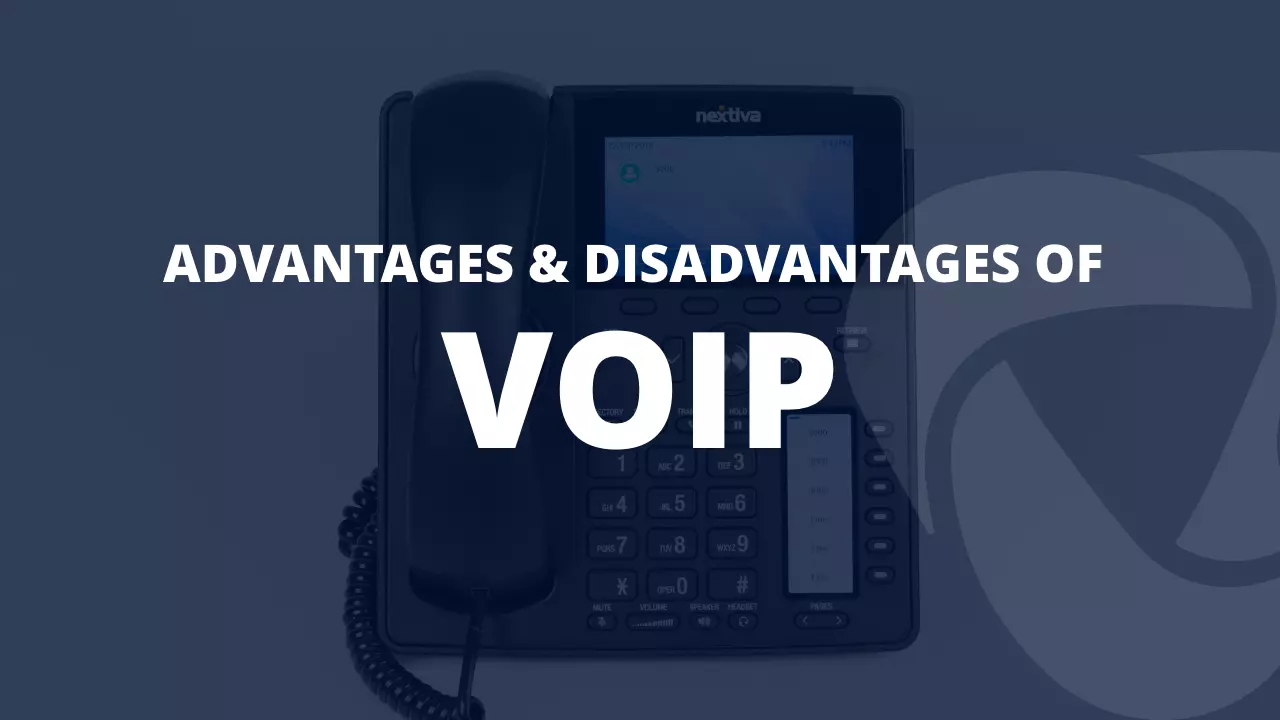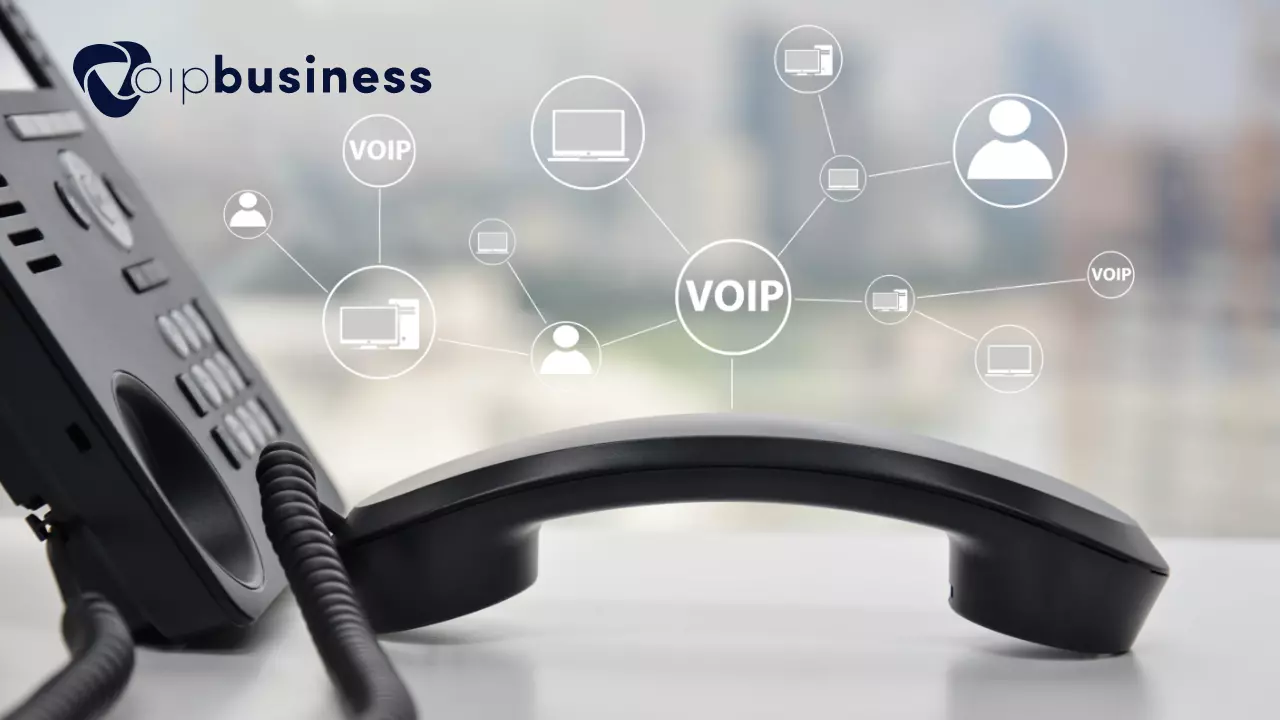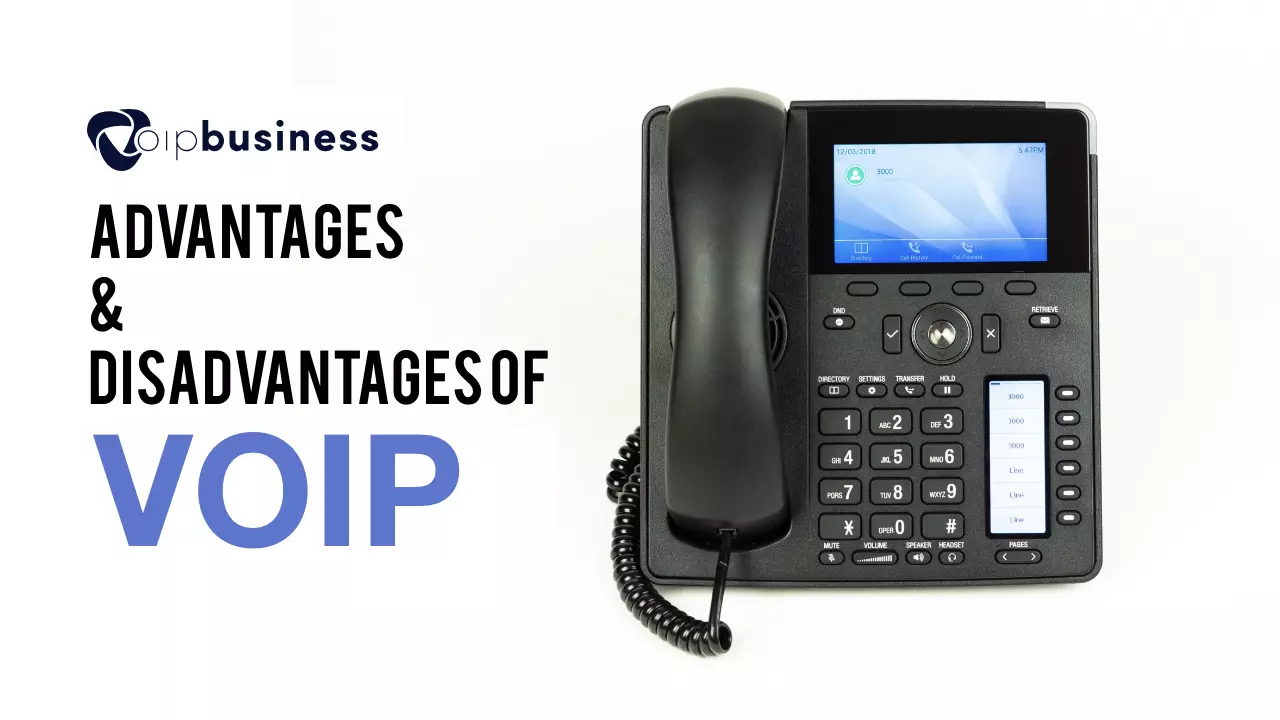Here’s a detailed overview of the advantages and disadvantages of VoIP:
Advantages & Disadvantages of VoIP Phone System

Advantages Of VoIP Phone System

-
Lower Costs
Direct Cost Savings
When it comes to conventional telephone service, a business requires plenty of initial charges, particularly for business telephones and PBX equipment.a) PBX Prices
A PBX (private branch trade) is on-premise hardware. It links plenty of landline phones in an office and can cost a great amount of cash. That may consist of a huge number of dollars. On the other hand, it can be a sum you can regain after a long time. Analogue phones cost more than VoIP phones. You may say that analogue phones are not more expensive than IP phones. But, the actual cost may differ according to the required features. Yet, on-location PBX deployments are expensive. They can range in between £300 and £400 per client. So even a private venture with a modest number of team members requires spending money on actual equipment. VoIP networks free individuals of this requirement for additional equipment since broadband connections facilitate the phone service. To make the installation easy for the telephone framework upgrade, such companies could utilise a Session Initiated Protocol, a SIP Trunk. A SIP Trunk serves as a computerised pathway for your audio services while keeping up with existing telephone equipment in your office. The primary advantages of SIP Trunking consist of lower costs, simple handling, and quick enabling of service. Technology pioneers utilise a SIP trunking supplier for adding new voice abilities to a current telephone framework.b) Copper Wiring Prices
Broadband links also prevent additional wiring because VoIP networks permit both voice and information on one channel. In the IT and telecom crowd, the right word for this facility is full-duplex. It’s the capacity to send and get voice and information simultaneously. Most VoIP work area telephones need just a single Ethernet link to work. Power over Ethernet (PoE) facilitates the employers to create departments in their workplaces, conveniently managing their office staff. Furthermore, those workplaces will not have to make changes to the infrastructure’s electrical wiring. Getting wireless: Smooth VoIP service is also obtainable as an app on your PC or cell phone. VoIP’s adaptability is a major success for business executives and companies at the same time.c) Calling Expenses
Direct expenses likewise come from the cost of calling. VoIP calls are less expensive than the Public Switched Telephone Network (PSTN) or the conventional circuit-exchanged phone network by manifolds. When it comes to huge companies, employees can benefit from web speeds while data costs have reduced. Figures show that small companies utilising VoIP can lessen their organisation’s telephone bill by up to sixty per cent. They can likewise save up to ninety per cent on worldwide calls. These are great statistics for any year. These reserve funds have led to the discontinuation of costly ISDN (short for Integrated Service Digital Network) primary rate interfaces. Or on the other hand, even the dedicated lines are related to a POTS framework of VoIP service. As a result, firms that place long-distance calls outside the UK benefit from VoIP’s reduced costs. Conventional telephone service expenses are about twice as much as VoIP costs. So VoIP offers a huge advantage for companies that work all around the world.Indirect Expense Savings
Indirect savings are harder to evaluate, yet that doesn’t make them less basic for your business. Given below are probably the most well-known areas of application where companies save cash for a long-time.a) Savings with Remote Work
Installation of VoIP facilitates employees in staying linked to the corporate telephone framework while working from a distance. That is because plenty of VoIP telephone features like call waiting and auto-attendant are beneficial. In addition, the VoIP facilities also include instant video calling, conference calling, and other elements not given by regular telephones. Research shows that this can improve workers’ productivity, but it can also reduce utilities and office space. A typical business can save £10,000 per individual each year by simply allowing them to do remote work, as indicated by a new investigation by Global Workplace Analytics.b) Additional Features at No Extra Charges
You may say that even conventional PBX provides remote job facilities through functionalities like call transfer or group ringing. Also call queuing and more. Generally, these facilities are not found in a standard PBX framework. Instead, they are additional facilities for which you have to make payments. By contrast, VoIP telephone facilities consist of large numbers of these facilities at no extra expense. There is no reason to pay an additional fee for whatever facility you consider could be valuable for your company.c) Reassignment of Manpower
Suppose your company relies on an assistant to manage the calls and take messages. In that case, the auto attendant feature facilitates you in reassigning that job at no extra expense. (An in-house assistant employed on a full-time role earns about £50,000 per year, which isn’t modest.) An assistant is suitable for businesses that take many walk-ins or big enterprises with huge spending plans. But small companies may consider this type of salary to be an additional expense. But with the auto attendant feature you can prevent this expense.2) Increased Reach ability
Cost-effectiveness besides availability is probably the greatest advantage of VoIP for companies. A particular benefit cloud-oriented VoIP service offers is the facility to place calls from any place.
If you have a reliable data connection, you can place and receive calls for your company. Also, when you cannot reply to the call, you can forward calls to someone else or get phone messages emailed to you. A prominent advantage of VoIP is the ability to move with your company telephone with you, and that is just a smartphone app.
In a highly mobile work team, remote work makes your company flexible. Mobile team members can stay active in any area.
Additionally: VoIP can adjust according to the way your team members work. For example, workers don’t have to be present at the workplace. They can keep on working from their smartphones and tablet devices from any location.
3) Total Portability
A VoIP number, otherwise called a virtual number, is versatile. That implies you can utilise the same number at any place you go.
For individuals who travel the most, it is great news. Also, if your company changes its address, you can keep the same VoIP number.
4) Higher Expand ability
Expand ability is one of the several VoIP benefits that make it an appealing recommendation for developing companies. But, while this is a frequently discussed part of VoIP, why is it necessary in this context?
Given the option, every business executive would prefer a phone system that grows in alignment with their business.
A VoIP solution prevents you from having to purchase expensive hardware or dedicated lines as you grow. Think of all the possible scenarios you can deal with, like:
- Preparing for an increase in demand during vacation times of the year.
- Launching another branch outlet.
Regardless of the situation, you can work as you prefer, right away without buying extra lines or specific equipment.

5) High-tech Facilities for Small and Big Workforce
With high-tech facilities like auto attendant and call forwarding, VoIP facilitates even an individual team member to represent a large business.
Also, it can assist in making the big companies easily reachable by the clients. It is an option that deals with making the maximum utilisation of all the present facilities.
For example, you run a business from London, but your customers are also from the Manchester area. By registering with an effective VoIP provider, you can obtain a VoIP phone number with a Manchester area code, but you work from London. That creates an impression in your clients that you are a local business, but your location is different in reality.
Also, the auto-attendant facility will represent you much bigger than you already are. For instance, you can be an owner of a business with a single department, but with the auto attendant feature, you can appear like a firm with plenty of departments.
VoIP provides benefits over conventional telephone frameworks with its multi-party call facilities. Big and small companies sometimes require a specific conference call service that facilitates plenty of people to participate in the small meeting.
Enterprise VoIP providers offer reliable conference calling services added inside their plans.
6) High Voice Quality
In the start, after the introduction of VoIP services by scientists, the biggest issue was its unreliable call quality. Calls had been dropping without any reason, the voice quality was not ideal, and latency was also imperfect.
Nowadays, internet connections are fast and reliable, so business owners don’t have concerns about voice quality. VoIP calls are hundred per cent clear, and there are no latency issues. There are no lags or dropouts in calls. Before the improvement of web speed, the voice and video conference was not up to the mark.
The leading reason for better quality of VoIP calls is the fast web connection with huge bandwidth. Without these specifications, it is not easy to place calls on VoIP systems. It is a fact that when a caller makes a call from the smartphone, the other team members have to experience echoes, lags, and interference.
VoIP telephones provide a trusty solution to that interruption so you can concentrate on your discussions. In addition, inventions like noise-cancelling mikes and high-tech audio compression facilitate the VoIP phones in obtaining perfect sound quality.
Disadvatanges of VoIP Phone System

All those innovations that have their benefits have their drawbacks. VoIP communication is not excluded from this rule.
Here are the disadvantages related to the VoIP system you should know about:
- A smooth internet connection is required.
- There are latency and jitter issues.
- You cannot convey your location and address for emergency calls.
1) Smooth Internet Connection Required
For beginners, your VoIP service will work at its best if you have a smooth internet connection. If your internet speed is slow, the service won’t provide you best results, undoubtedly. VoIP devices must receive adequate web bandwidth.
VoIP doesn’t utilise too much bandwidth as you may expect. VoIP devices must have low latency on your local area network. Every device should have something like 100 kbps accessible upload speed. A decent connection has under 70ms ping and jitter, which indicates optimum latency and reliability of your web connection.
The bandwidth your company requires will rely upon the number of simultaneous calls you plan to place. The ideal way of deciding this is to run a data transmission test on your present network.
2) Latency and Jitter
Besides speed, there are other connectivity drawbacks any web-based software can experience: they are latency and jitter.
When communicating on the web, every message (whether email, video, or sound) is broken into pieces of information called “information packets.” These packets are then recombined at their particular location to make the message.
Latency and jitter are when these information packets either experience delays in transmission or get in-correctly re-collected. These setbacks probably won’t be with your network; big internet service providers change information paths to facilitate traffic smoothness and the fastest route to the destination. These alterations take place automatically with no contribution from you.
Reasons For Latency And Jitter:
Slow Web Connection: VoIP runs on a bandwidth that is more than the bandwidth suitable for typical web browsing. That is why, if your web speed is slow, it is advisable to have a frank discussion with your internet service provider about increasing the bandwidth.
Inappropriate Router: To make sure that your VoIP service is smooth, it requires a particular type of VoIP router. A router customised for packet prioritisation enables it to adjust as per the higher priority for voice traffic transmission over data.
Insufficient Cables: Ethernet cables are manufactured in a variety of types of power levels. For VoIP, it is best to utilise a Cat-5e Ethernet cable or more. Lower power level cables might not be able to work at fast speeds.
Instructions To Fix Dormancy And Jitter Issues
Activate Jitter Buffering: It is not difficult to configure and comes pre-enabled with plenty of gadgets.
Select fast-speed Web: Contact your internet service about the internet plans they are providing.
Install better ethernet cables: Install a CAT-5e or CAT-6 Ethernet cable on all VoIP gadgets.
3) Limited Location Tracking for Emergency Calls
Location guidance is the last con of VoIP. Due to the VoIP’s portability and reachability, it is tough for outsiders to pinpoint where they are calling from.
The calls originate from an IP address without any GPS information or cell tower data to find out the location. While almost all the callers don’t have to bother about this data, this makes an issue for emergency help providers like 911. You’ll have to convey your address to them when they require it.
4) Need VoIP Telephone To Link While Installing At Home
You require a VoIP telephone to link with a VoIP specialist service. You can achieve this in any of these three different ways:
Link a specific VoIP service to your local area wired ethernet WiFi. Utilise your traditional analogue phone but with an analogue phone connector.
Conclusion
By viewing the pros and cons above, we can see that VoIP’s advantages outweigh any downsides. We hope that this post will help companies in transforming their custom telephone frameworks to better telecommunication solutions.
With the above information, you can give attention to necessary business details as we provide you with facts about setting up a new telephone framework, with negligible disturbance.




